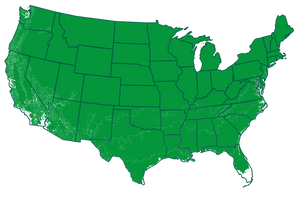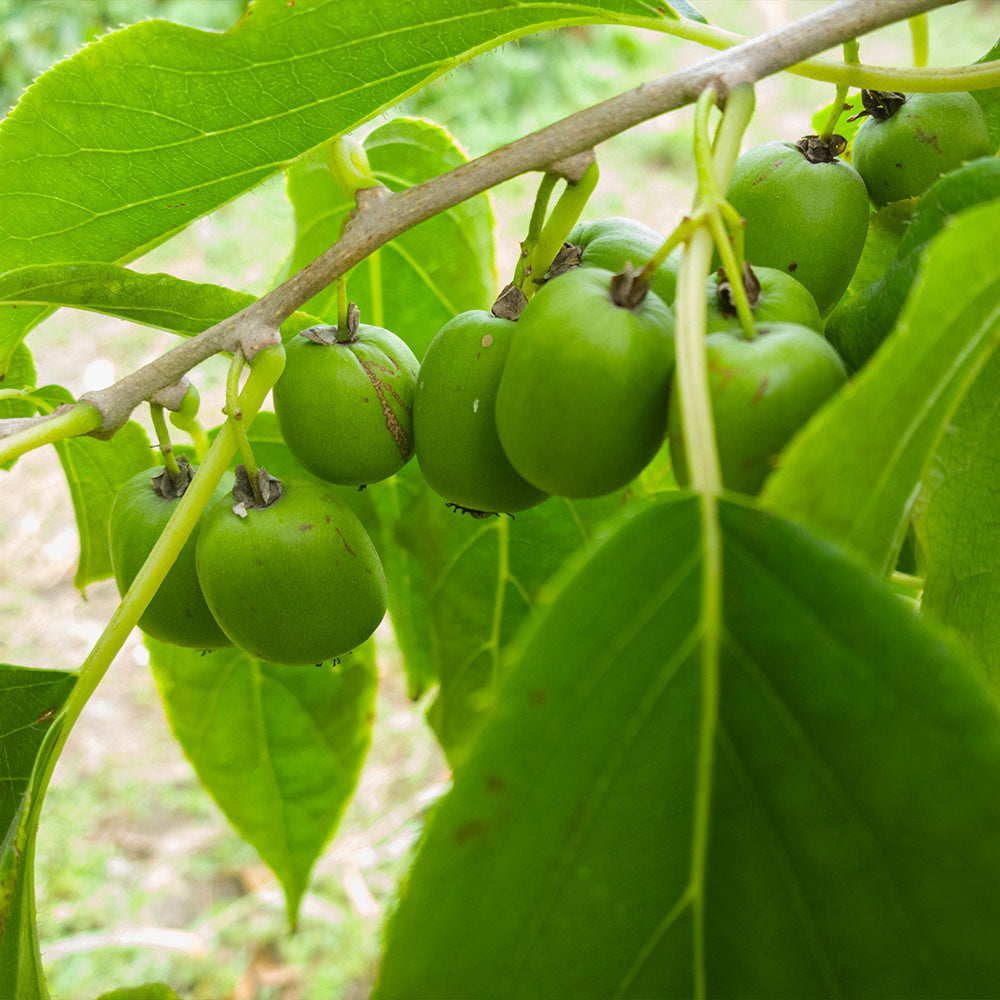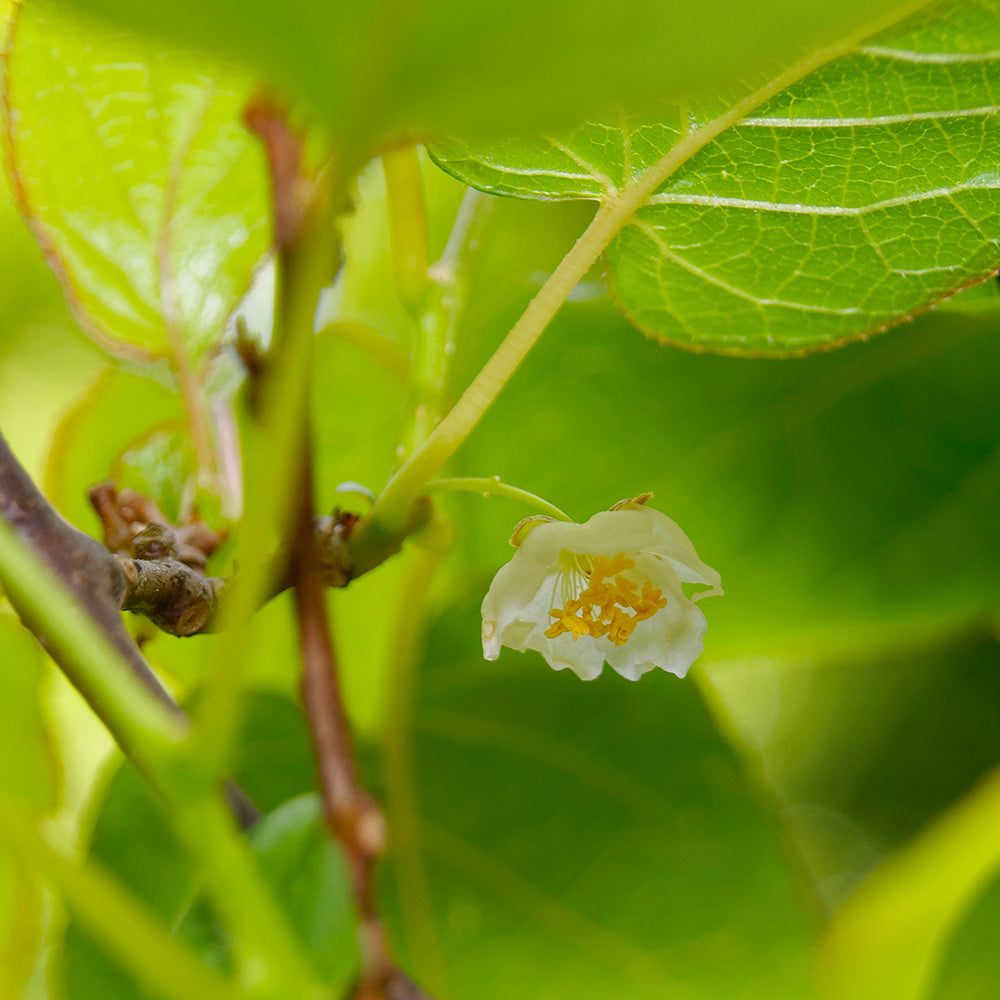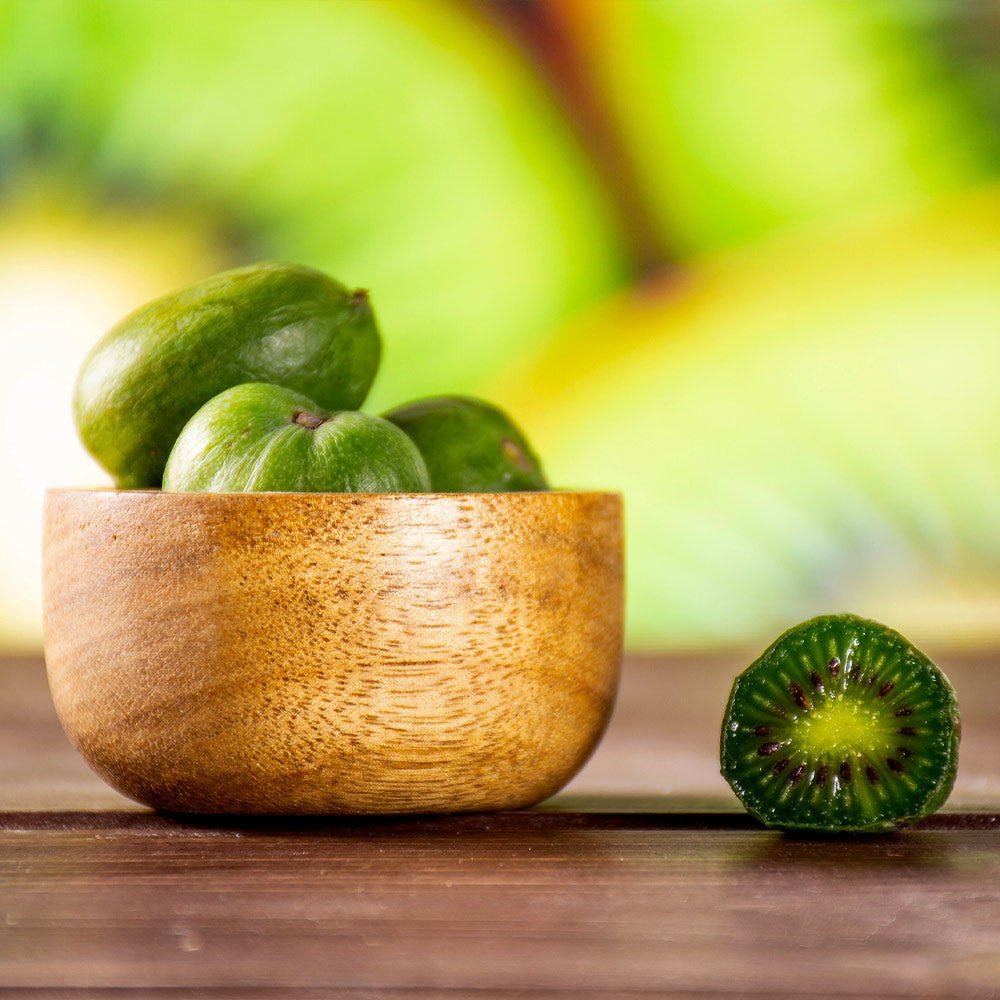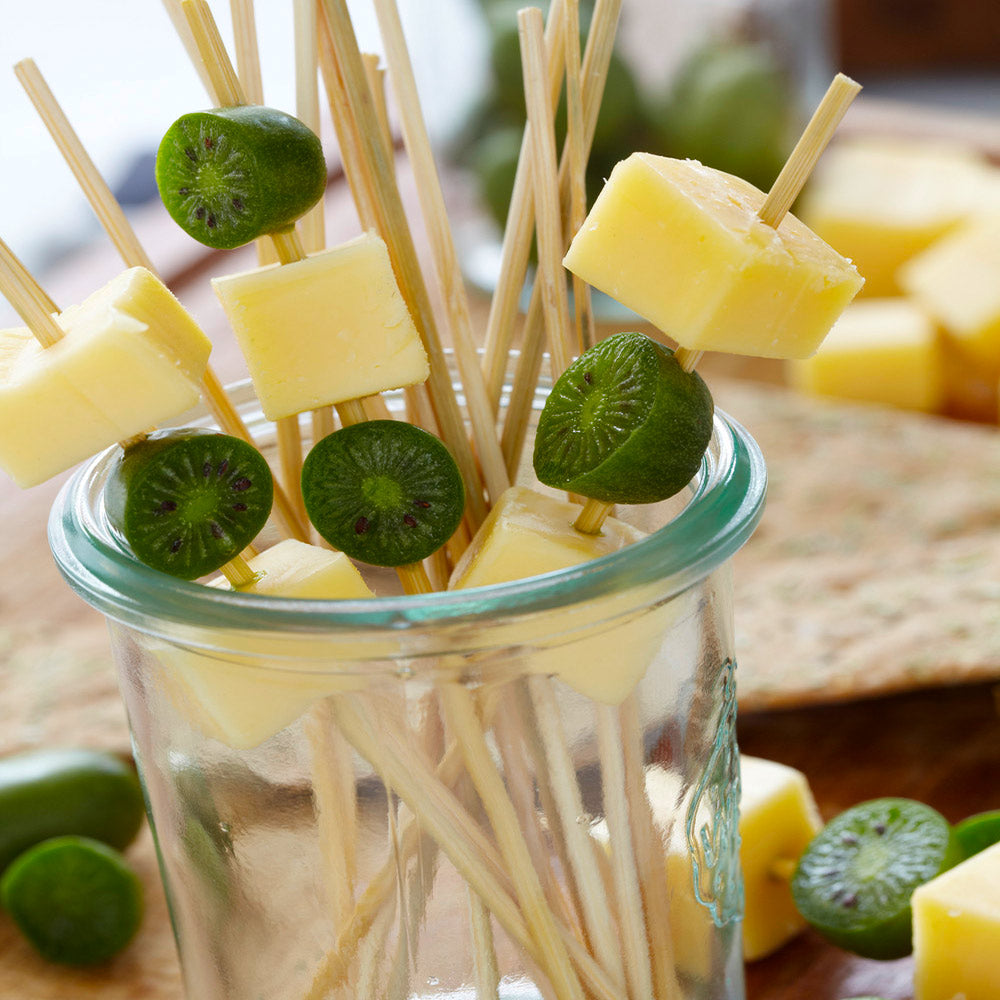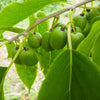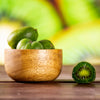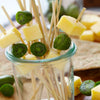* Images shown are of mature plants

Have questions? Talk with our Plant Experts (800) 973-8959
Save 25% on $200+ with code FALL25.
Questions? Call our plant experts: (800) 973-8959
Harvest pounds of sweet and juicy kiwis
The Anna Hardy Kiwi has a unique flavor that’s sweet yet tart and tangy similar to a pineapple. With its smooth firm skin, and smaller grape like size they’re perfect for picking right off the vine for snacking.
With this kiwi variety you don’t have to take the time to peel them before you can enjoy them. Simply walk out to your kiwi vine during a hot summer day and grab a few Anna Hardy Kiwis to enjoy their firm skin and soft, juicy flesh for a refreshing treat.
Not only are Anna Hardy Kiwis delicious, but also they’re incredibly nutritious. They have a high amount of vitamin C, A, potassium and B vitamins to naturally boost your immune system and to protect your hair, skin and teeth.
Kiwi vines provide beauty and tons of fruit while hardly taking up any space at all. They will grow on a fence or trellis, leaving your yard free. In the spring the kiwi vines erupt with vivid white blossoms before green kiwis emerge and start growing to give you a full harvest of fruit in the late summer.
Anna Hardy Kiwis are often referred to as ‘Hardy Kiwis’ because they have an incredibly high tolerance for cold weather. They’ll thrive up north with temperatures well below freezing along with heavy snow and ice storms. They are also heat and drought tolerant and will grow in southern areas with hot and dry summers.
Best of all, Anna Hardy Kiwis are an extremely pest and disease resistant cultivar, leaving you with a worry free, low maintenance plant that provides an abundance of irresistible kiwis.
Anna Kiwis do require a pollinator to produce fruit... However, we made this easy for you! We have pre-bundled the Meader Kiwi with your Anna Kiwi to ensure you receive the best pollinator that will produce abundant fruit for years to come.
Pollination Info
Anna Hardy Kiwi Pollination
Kiwi vines need both a male and a female plant to make thier delicious fruits. We know pollination can be a bit tricky, so we include one of each when you buy your kiwi. For best results, plant your male and female kiwis nearby one another to give pollinators a helping hand.
Planting & Care
The Anna Hardy Kiwi (Ananasnaya) is a hardy plant that does well in freezing temperatures as well as hot temperatures in the south. It’s recommended for a wide range of zones, 4-9 and can reach a mature height and width of 15-20 feet. They do best when given a sturdy structure to climb as they grow such as a fence, pergola or trellis. This also helps to save yard space in your garden. In spring they are bursting with white blooms which give way to small, grape-sized fruits ready for harvesting between August and September. Their smooth, firm skin makes them edible without having to peel them. Enjoy the sweet, tangy and tart fruit packed with vitamins C, A and B and plenty of potassium. The Meader Hardy Kiwi is the recommended pollinator for this plant.
Choosing a location: Kiwis can be grown in any garden soil but does best in between a 5.5 to 7.0 pH level and do not tolerate poorly drained soils. They benefit from adding some compost (“organic matter”) before planting. Vines perform best in full sun and when planted in late spring, well past the point of any frosts. They also will need a support system or “trellis.” Kiwifruit trellises are usually in the shape of a “T.
Please Note: These plants share the same pot while they’re growing in our nursery. While this is ok when the plants are young, we highly suggest separating them when they arrive to your home. To do this, simply separate the roots with your fingers, using the trunks to guide you, before planting them. This will ensure they get properly established in their new home.
Planting Instructions (in ground):
1) To plant the kiwi in the ground, choose a well-drained spot with either partial shade or full sun. Dig a hole with a spade that is twice as large as the root ball and slightly deeper.
2) Plant the vine against a fence or add a trellis at the time of planting, as the vines need support. Avoid adding it to the vine later.
3) Place the kiwi’s root ball in the hole and center it. Hold it straight while back filling the hole in with a mix of quality topsoil and organic material, such as compost. Once the hole is filled, push down on the soil firmly but gently.
4) Water the planted vine thoroughly, but do not leave the kiwi sitting in puddled water. Make sure the ground drains well. Keep the kiwi watered during the growing season to keep it from stress. (see watering instructions)
Winter cold bites hard at plants of all species their first two or three years in the ground, especially with intense sunlight. A wrapping of corn stalks, burlap, or similar materials will shade the developing trunks and help with the cold.
Delay protecting the trunks until frost has penetrated the ground slightly; the plants must be exposed to some cold in order to properly acclimate to the cold months ahead. Where winters are severe, either due to very low or fluctuating temperatures, this wrapping may be advisable even for mature plants.
Planting instructions (potted kiwi)
1) Put the pot next to the trellis, arbor or pergola that will support the hardy kiwi fruit vine.
2) Fill the pot two-thirds full with the potting mix anchoring the bottom portion of the root ball into the potting mix.
3) Add more potting mix to bring the soil line up to the level the plant had in its original container. Tamp the soil firmly to get rid of air gaps. Add more potting mix if necessary, but leave 2 to 3 inches of head space for watering.
4) Put a plant stake next to the newly planted vine if necessary to lead it to the support trellis as it grows. Use planters tape to fasten the vine to the stake at intervals. (Planters tape is inexpensive and commonly found anywhere that sells plants/trees).
Watering: If summer brings about an inch of rainfall every 7 days or so, you won’t need to use the hose. If rainfall is sparse or your area is suffering from a drought, you will want to water your plants (about a gallon per plant – this is equivalent to about an inch of rainfall) every 7 to 10 days. The best way to do this is to let your garden hose trickle slowly. This gives the water a chance to soak in instead of running off. You can also use a soaker hose to water several plants at once.
If you are expected to get an inch or more of rainfall during the course of 7 to 10 days during the first year of growing for your kiwi plant, you will not need to supply additional water to the plants or you will risk drowning the roots.
If your area is prone to heavy rains, especially during the growing season, you will want to be sure your kiwi plants are rooted in a well-drained location to prevent waterlogged (drowning) roots.
Pruning: Pruning is necessary both during the dormant season and during the growing season. Trim flowering shoots back to 4 to 6 leaves beyond the last flower. In the dormant season, remove canes that fruited last season, as well as dead, diseased or tangled cane. Plants benefit from a thick layer of organic mulch, which helps control weeds, adds organic matter to the soil, and aids in moisture retention.
Fertilization: Do not fertilize kiwis the year of planting. In early spring of the second year, sprinkle 2 ounces of 10-10-10 (balanced fertilizer formula) around each plant. Increase this amount by 2 ounces each year until the plants are receiving 8 ounces, then do not exceed this amount.
Harvesting: Starting in late August, pick a few fruits and let them ripen on a windowsill or in a paper bag. Taste them when the flesh is soft and the seeds are black. If they don’t ripen, wait several weeks and then test a few more fruits.
When you notice the first fruit softening on the vine, pick all the fruit. Store hard-ripe fruit in airtight plastic containers or sealed bags in the refrigerator. Take out a few at a time to ripen. Eventually, all of the fruit on the vine will soften, but if you wait that long, you will have an overwhelming harvest of fruits that will last only a short time.
Regardless of when you start to harvest, be sure to pick all the fruits before the first frost. A single mature hardy kiwi plant can yield up to 50 lbs of fruit! Hardy kiwis are also made into jam, but they’re also delicious simply sliced in half and drizzled with fresh cream.
Shipping Details
Estimated Shipping Time: Most orders ship immediately. As noted on the website, some items are seasonal, and may only ship in spring or fall. Once your order is shipped, you'll receive an email with a tracking number.
| Amount of Order | Shipping Charge |
|---|---|
| Less than $49 | $19.95 |
| $49 + | FREE SHIPPING! |
Product Details
| Mature Height: | 15-20 ft. |
| Mature Width: | 15-20 ft. |
| Sunlight: | Full-Partial |
| Growth Rate: | Fast |
| Harvest Time: | August - September |
| Botanical Name: | Actindia arguta 'Ananasnaya' |
| Does Not Ship To: | AZ |
| Grows Well In Zones: | 3-9 outdoors |
| Your Growing Zone: | # |
